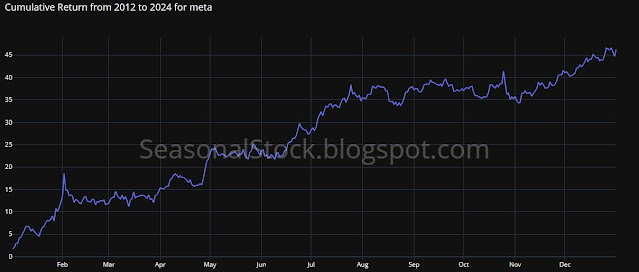Corteva, Inc. (CTVA) - Seasonal Performance Overview
Corteva,
Inc. (CTVA) demonstrates clear seasonal trends that can be useful for
investment planning. Historically, CTVA shows bullish tendencies at the
end of January through mid-February, mid-March, early April, mid-May,
mid-July, the beginning of October, and December. These periods often
reflect key agricultural cycles, market demand shifts, and strategic
developments in the company’s operations.
The bullish phase from
late January to mid-February typically benefits from the post-harvest
period and the anticipation of spring planting. As farmers plan for the
growing season, CTVA often sees increased demand for its products,
driving positive stock performance.
Mid-March and early April
represent favorable periods, often coinciding with the start of the
planting season and associated agricultural activities that boost the
company's performance. This is followed by another bullish phase in
mid-May, aligning with the planting season’s progress and growing
investor optimism.
Mid-July marks another strong period,
influenced by mid-year agricultural reports and the initial impact of
growing season results. The beginning of October sees renewed interest
as harvest approaches and farmers plan for the upcoming year, driving
stock performance.
December is another bullish period, generally
supported by year-end financial results and strategic initiatives, as
well as preparations for the next growing season.
On the bearish
side, CTVA tends to experience weaker performance from mid-January,
mid-February to mid-March, early June, early July, and mid-September.
These downturns may result from seasonal adjustments in the agricultural
sector, market corrections, or strategic pauses.
In summary,
Corteva, Inc. generally performs well from late January to mid-February,
mid-March, early April, mid-May, mid-July, early October, and December.
However, investors should be aware of potential bearish trends in
mid-January, mid-February to mid-March, early June, early July, and
mid-September.
 |
| CTVA Seasonality Chart |


































